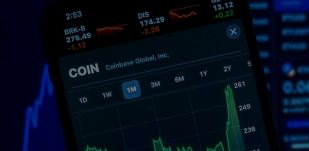What is the Difference Between IBAN, SWIFT (BIC) and Routing Numbers?
In this article, we’ll be talking about four of the most common acronyms you’ll encounter in the world of banking. IBANs, SWIFT codes (also known as BIC) and routing numbers all help banks identify where your currency needs to go when being transferred. Each of these operates in a slightly different way depending on the country and bank’s transfer processes, so it’s worth having a solid understanding of them all. In this blog, we’ll detail the differences between IBAN numbers and SWIFT codes, explain routing numbers and tell you where they can be found.
What is an IBAN?
IBAN stands for International Bank Account Number and is a unique identifier used when making international payments. Your IBAN number identifies a specific banking account the transfer should be made to, ensuring the payment reaches its destination safely.
IBAN numbers vary between countries but are typically made of up to 34 letters and numbers. They contain your:
- Country code
- Check digit
- Bank Identifier Code (or BIC)
- Branch code
- Account number
Is my IBAN the same as my account number?
No, your IBAN is not the same as your account number or sort code, and it doesn’t replace these either. Instead, your IBAN is an additional number that contains extra information to help foreign banks identify accounts when you send money overseas.
Is my IBAN the same as my SWIFT code?
No, your IBAN code and SWIFT code are different. Your IBAN identifies the individual bank account you’re using to make your overseas transfer, whereas your SWIFT is much shorter and used to identify a specific bank to verify international payments.
Do UK bank accounts have IBAN numbers?
Yes they do. You can find your IBAN number on your bank statement. IBAN is mostly used across Europe, the Middle East, North Africa and the Caribbean. It isn’t used in the United States, Canada, Australia or New Zealand, as they have their own versions.
Are there IBANs for US banks?
The US IBAN number equivalent is an ABA routing number for domestic transfers and ABA SWIFT code, which we’ll come onto shortly, for international transfers.
What do SWIFT (BIC) codes look like?
SWIFT stands for the Society for Worldwide Interbank Financial Telecommunication, but it’s not as complicated as it sounds. A BIC or SWIFT code (also known as SWIFT BIC or SWIFT ID) is there to determine who the bank is (or other financial institutions) and where they are in the world.
SWIFT codes are between eight and 11 characters long and consist of:
- A four-letter bank code
- A two-letter country code
- A two-character location code (letters and digits) for your bank’s head office
- An optional three-character branch code (letters and digits)
If it helps, think of your SWIFT code as a postcode for your bank to make sure your international transfer is sent to the right place. Without your SWIFT code, your transaction won’t happen.
What is a Bank Identification Code or BIC?
Bank Identification Code, or Bank Identifier Code (BIC) is the same as your SWIFT code. The two terms are used interchangeably and given different names by different financial organisations.
Where do I find my IBAN and BIC number?
You’ll find both your IBAN and your bank’s SWIFT or BIC code on your bank statement or in your account details within the secure area of your online bank.
ACH routing number vs. SWIFT code – what is the difference?
An ACH (Automated Clearing House) routing number or ABA (American Bankers Association) routing number is a nine-digit ID that’s only used for domestic transfers in the US. If you’re looking to send an international transfer to or from the US, you’ll need the US bank’s routing number, as well as the SWIFT code.
What is a routing number and do I need one for international transfers?
A bank routing number, also known as a routing transit number and international routing code, is a nine-digit number used by banks for domestic and international transfers in the United States. If you have a US bank account, you’ll need your routing number for every transfer and if it’s international, you’ll also need your SWIFT code.
Where can I get my bank routing number?
If you have a US bank account, you’ll find your routing number on the bottom of any cheque (to the left of your account number) or in your account details within the secure area of your online bank. Routing numbers aren’t confidential so you don’t need to worry about keeping yours safe. In fact, you can usually find your bank’s routing number with a quick Google search.
Is a bank ID the same as a routing number?
Yes, your US bank's routing number is your bank's ID. Your ACH or ABA routing number proves that it’s a legitimate bank and helps to ensure that the money routes to or from the right bank.
Do you need a routing number for an international wire transfer?
Yes, the US Federal Reserve Banks use routing numbers to process electronic transfers (called Fedwire transfers) and the Automated Clearing House (ACH) network uses them to process direct deposits, bills, salary and pension payments and other automated transfers.
How many routing numbers does a bank have?
US banks use different routing numbers for different types of transactions, which means the routing number on a cheque might not be the one you need for a wire transfer or direct debit, for example. For this reason, it’s always best to check with your bank to find your routing number before any transfer, as using the wrong one can cause serious delays.
International money transfer with Clear Currency
When you join us, you’ll benefit from:
- Quick sign-up: Create an account and get up and running within minutes.
- 35+ currencies across 130 countries, instant competitive rates and no payment fees.
- Flexibility: Make money transfers via our simple and secure online payments platform, by email or over the phone.
- Currency exchange expertise: When you join us, you'll be assigned a dedicated account manager who’ll help you cut through the jargon.
- FCA regulation: Authorised and regulated by the Financial Conduct Authority.
Not quite ready to open an account? Give us a call on +44 (0)20 7151 4832 or email hello@clearcurrency.co.uk.
Related Articles
How to Mitigate Foreign Exchange Risk
Currency risk can have a significant effect on the efficiency and profitability of any international business. Each exchange rate movement affects how much you receive from sales and what you pay to suppliers.
Read more
Moving to Dubai from the UK: Checklist
You’re ready for a new life overseas and have decided you’re moving to Dubai. Now it’s time to consider the various costs involved, from your visa and accommodation, to health insurance, shipping your belongings and bringing your beloved pets along too.
Read more
Currency Outlook Quarter 1 2023
Clear Currency looks back at the performance of the US dollar, euro and sterling in Q4 2022, and assesses what might be in store for Q1 2023.
Read more


